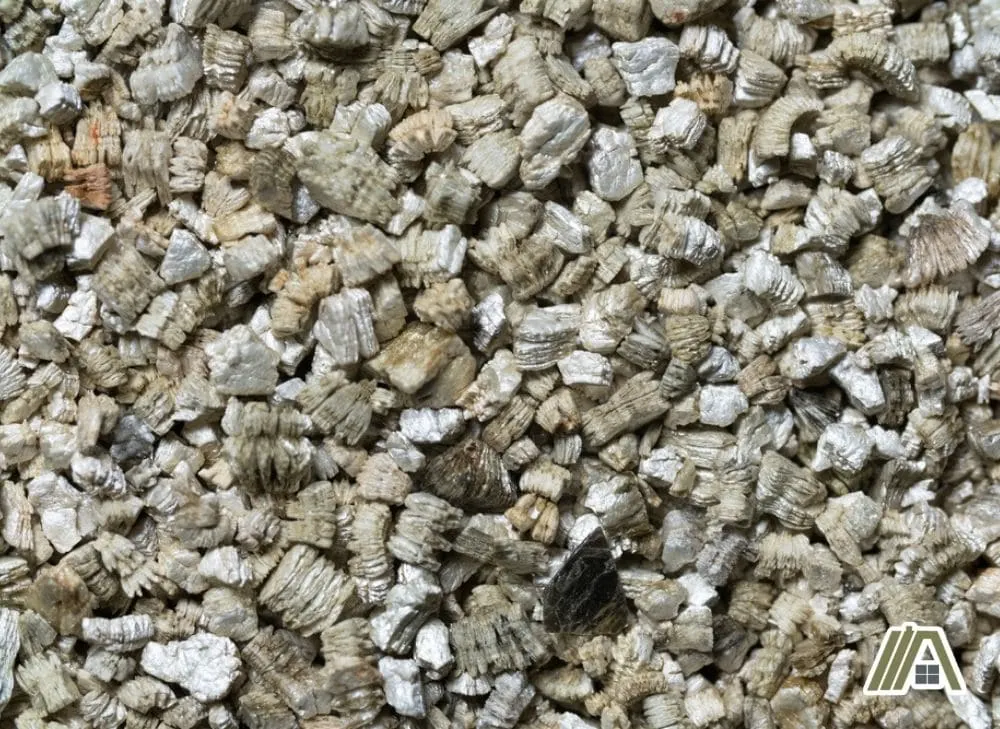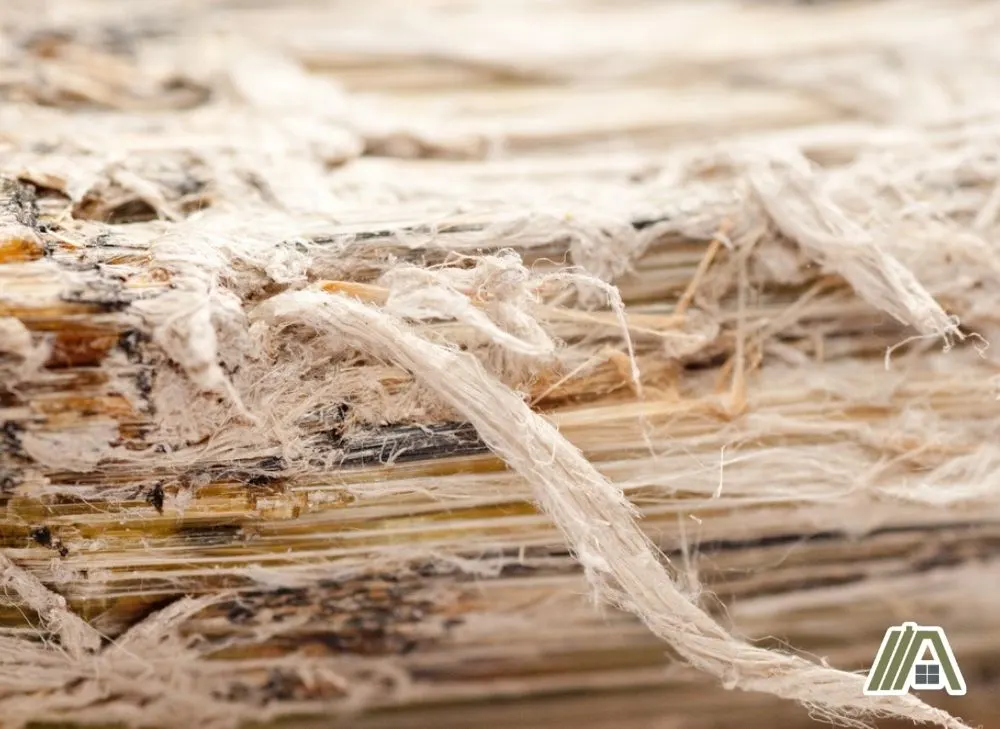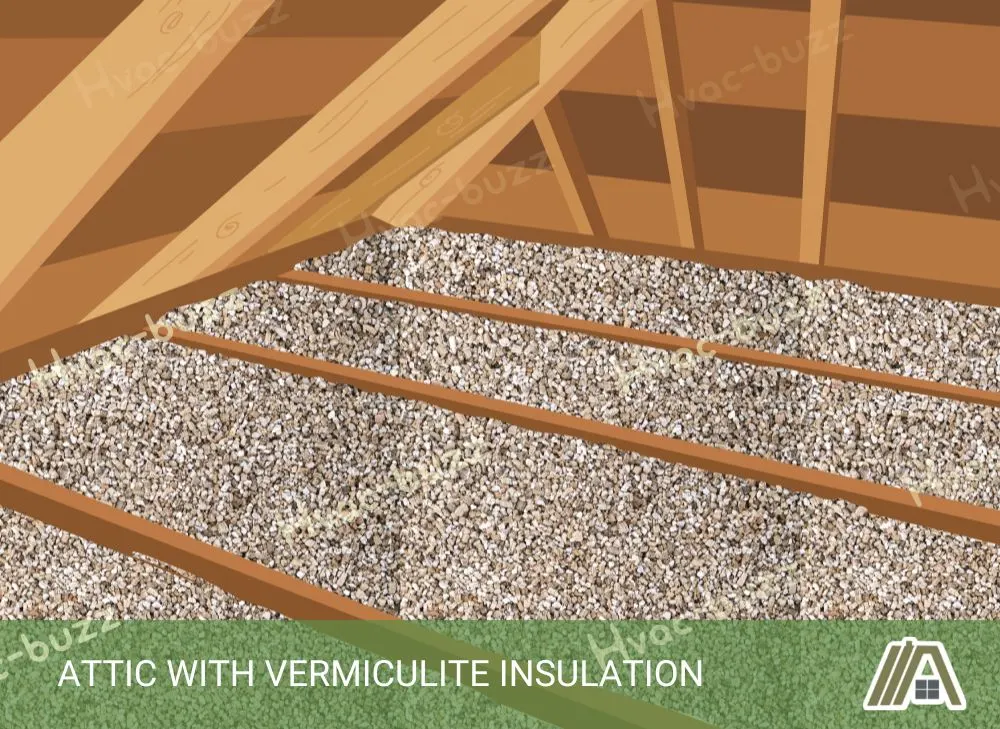Insulating your home is an important part of saving energy. Unfortunately, some insulation materials over the years have been found to be dangerous.
Asbestos is the best known, but vermiculite also has a troubled history, which is actually the result of asbestos as well. The issue, centered around a single vermiculite mine, is a historical one but with present-day implications.

Vermiculite insulation isn’t dangerous and hasn’t been banned. From 1940-1984, the vast majority of vermiculite insulation sold in the US and Canada came from the Libby vermiculite mine and was distributed by Zonolite. The mine was contaminated with asbestos. Production ceased in 1984, and the mine closed down.
The Problem With Vermiculite Insulation
Vermiculite is a shiny, flaky mineral that isn’t technically dangerous on its own.

Its special ability to swell eight to thirty times its original size made vermiculite an ideal material for insulation. That and its lightweight, fire-resistant qualities.
Ironically, these qualities are what make asbestos an ideal insulation material as well.
Unfortunately, if your insulation is vermiculite and it was installed before 1984, then it more than likely contains asbestos.
This is because, between 1940 and 1984, more than 70% of the vermiculite sold and processed in the United States originated from one mine: the Libby Mine in Montana.
In the early 80s, it was found that all of the vermiculite from this mine had been contaminated by asbestos deposits contained within this same mine. Some of the insulation only contains a small amount of asbestos and some have greater concentrations. However, all contaminated insulation is dangerous.
It is widely known that asbestos is dangerous to inhale, and there is no safe exposure limit. Unfortunately, asbestos is friable, meaning it is easily broken up without applying lots of force, and the small fibers are free to be carried in the air and inhaled.

Once inhaled, these tiny particles have a very long residence time in your lungs, embedding themselves and causing tiny wounds that lead to the buildup of scar tissue. The buildup of scar tissues alone can damage your lungs.
Yet, on top of this, asbestos has been proven to be a carcinogen, or a compound that can lead to cancer.
The Libby Mine Closed Down
Originally, the Libby mine was a gold mine. However, in 1881, it was noted by gold miners that it also contained vermiculite.
In the 1920s, the Zonolite Company decided to capitalize upon this mineral and bought the mine with the intention of mining the vermiculite for insulation materials.
Zonolite’s ownership over the mine did not last long though, as the mine closed in 1990. This event is readily linked to the danger of the tainted vermiculite, especially as the residents of Libby began to get sick from just being in the area where the mining was taking place.
Despite the fact that it closed down in 1990, the mine was still exerting its negative effects on the surrounding areas, and it would take a decade for the Environmental Protection Agency (EPA) to take action in Libby, Montana.
The situation at Libby Mine was actually the first circumstance of the EPA declaring a public health emergency, but this only took place in 2009.
This public health emergency was declared to provide federal funding for those impacted by the asbestos in the Libby Mine as many were, at this point, victims of asbestos-related diseases, which only appear years after exposure.
Because the Libby mine was shut down in 1990, it is unlikely for insulation manufactured after 1990 to contain tainted vermiculite.
It’s not that other vermiculite mines cannot be contaminated, but rather because rigorous asbestos testing is done on all vermiculite insulation mined and produced nowadays.
Zonolite Was Taken Off the Market
Because the Zonolite Company primarily used vermiculite from the Libby mine, it can be assumed that all of the insulation they produced over the several decades of their operation was tainted with asbestos.
With this assumption in place, it was imperative that Zonolite vermiculite insulation was taken off the market as soon as possible. The company wanted to reduce lawsuits and prevent future asbestos-related diseases.
Although the Libby mine closed in 1990, this does not necessarily mean that Zonolite vermiculite insulation was produced and in the market until 1990.
In fact, Zonolite vermiculite insulation production halted in 1984. During this year, Zonolite insulation was taken off the market for customer safety.
This means that we can give an earlier date than 1990 and say that if your vermiculite insulation was produced after 1984, it is unlikely that it contains asbestos.
Vermiculite Insulation Is Not Banned
Although the Zonolite vermiculite insulation contained asbestos, not all vermiculite insulation contains asbestos.

As we have established, vermiculite by itself is not dangerous, and for this reason, it is not banned. It is, however, now tested for asbestos before being sold.
Despite the seriousness of contaminated vermiculite insulation, there is no reason to fear vermiculite insulation produced after the 80s because of these regulations.
Do You Have to Remove Old Vermiculite Insulation?
As mentioned, if your vermiculite insulation was produced after 1984, it is likely that it does not contain asbestos.
It is even more likely that your vermiculite insulation is safe if it was produced in the 90s or later since this was when EPA action and the testing of vermiculite-containing insulation began.
However, if your vermiculite insulation was manufactured earlier than 1984, it is likely that it is Zonolite brand and contains asbestos.
If you know the insulation is Zonolite brand, you may have to remove the insulation, but this is not necessarily the best solution.
Removal would be necessary if the insulation is exposed to the air of your home or if there is any risk that asbestos fibers could enter the air.
If such conditions exist, professionals can test your insulation for asbestos content and determine whether the insulation should be removed or not.
It is possible to remove the insulation yourself if you have the proper equipment and are as safe as possible. However, it is recommended that professionals are trusted with this job since your and your family’s health may be at risk if the removal process is not done correctly.
In most cases, the removal of vermiculite insulation is not necessary, even if it contains asbestos. Many actually believe it to be more dangerous than simply leaving it alone.
If the insulation is well-sealed and will not be disturbed in the near future, it is best to leave it alone. If you need to, you can install new insulation over the vermiculite.
However, asbestos in a home, even sealed away, can lower the property value and make future renovations much harder, so you will need to consider this as well.
Sources
https://www.epa.gov/asbestos/protect-your-family-asbestos-contaminated-vermiculite-insulation
